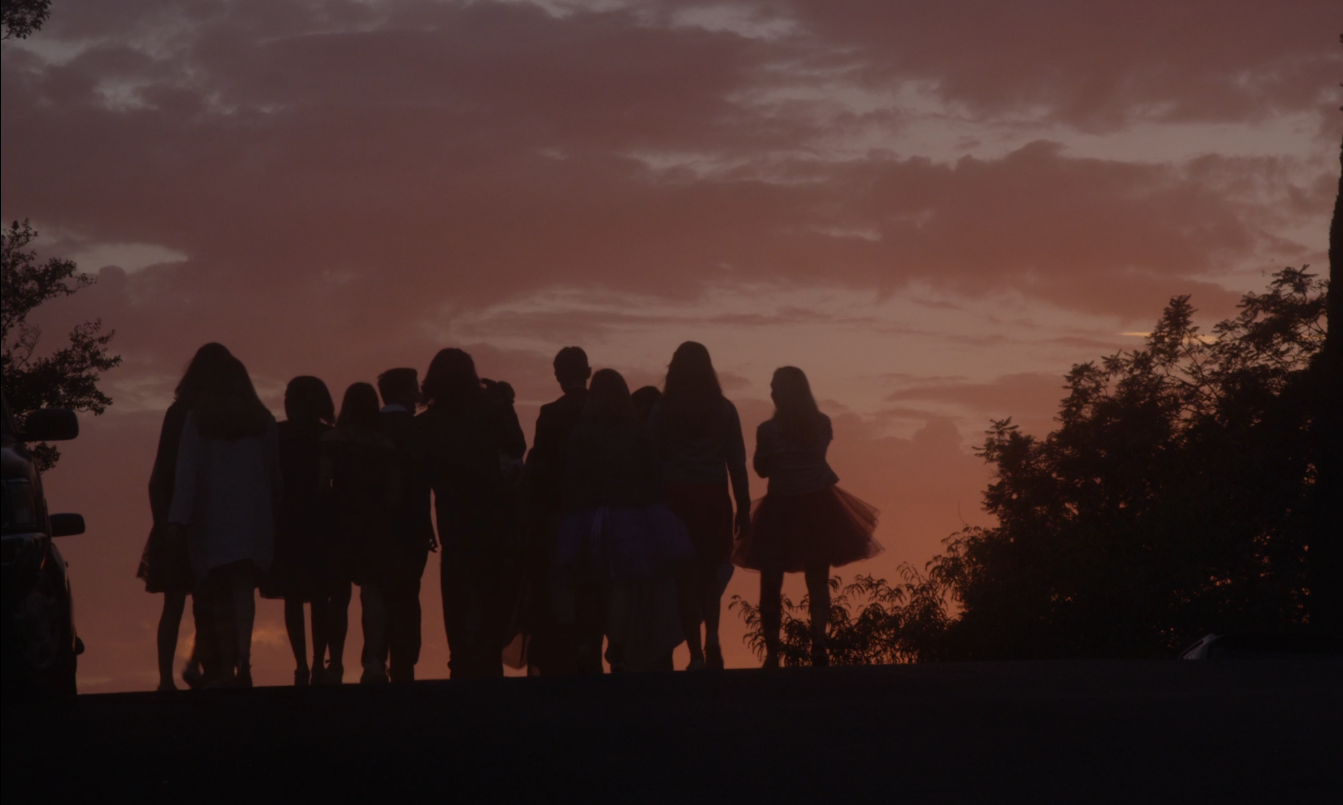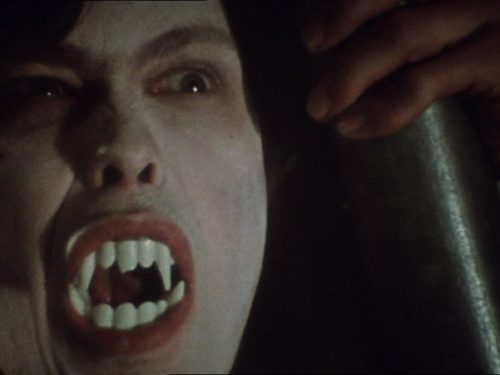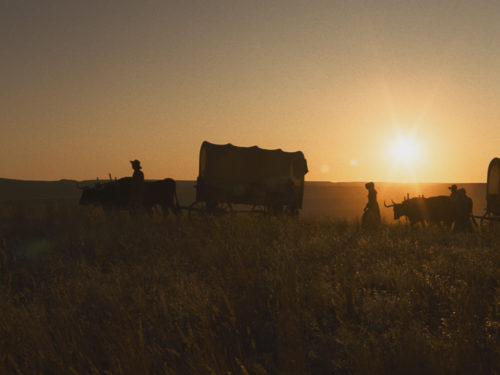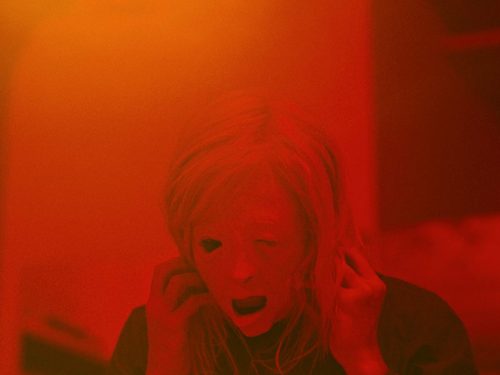With his first feature film now available, Taormina reflects on how his suburban upbringing helped shape Ham on Rye
The most obvious sequence of David Lynch’s career is also one of the surrealist’s most famous. Lynch’s camera dips below the manicured lawns of Blue Velvet’s squeaky-clean suburb, exposing what look like writhing, scuttling insects. It’s remarkably on-the-nose for a director who’s known to confound audiences and resist pat interpretations. Tyler Taormina’s debut feature (which has earned well-deserved comparisons to Lynch’s work) examines the rotten heart of a picturesque suburb, too. He does not, however, take us underground to find it. He doesn’t have to. Ham on Rye isn’t a film about buried secrets. It focuses instead on the vaguely insidious side of life that we not only tolerate, but embrace.
Taormina splits Ham on Rye into two tonally and thematically distinct segments: a sunny teenaged slice of life, followed by a grimmer, quieter look at what happens after the sun goes down. The first sees several small groups of teenagers make a pilgrimage to Monty’s, a local deli. It’s a rite of passage, which parents whisper about and participants greet with the mix of trepidation and eagerness that should look familiar to anyone who was ever a teenager. There, they participate in a kind of prom. They nervously select partners and dance throughout the afternoon. As the sun goes down, the celebratory air disappears alongside the revelers themselves. Together, the pairs walk toward the outskirts of town where they disappear without a trace or explanation. The melancholy back half focuses on the people they left behind — parents, peers, and even some ’90s Nickelodeon stars.
Last month, I spoke to Taormina about Ham on Rye’s protracted release, its huge cast of young actors, and the sinister side of suburban locales. The film, one of the year’s best, is currently making a digital theatrical run.
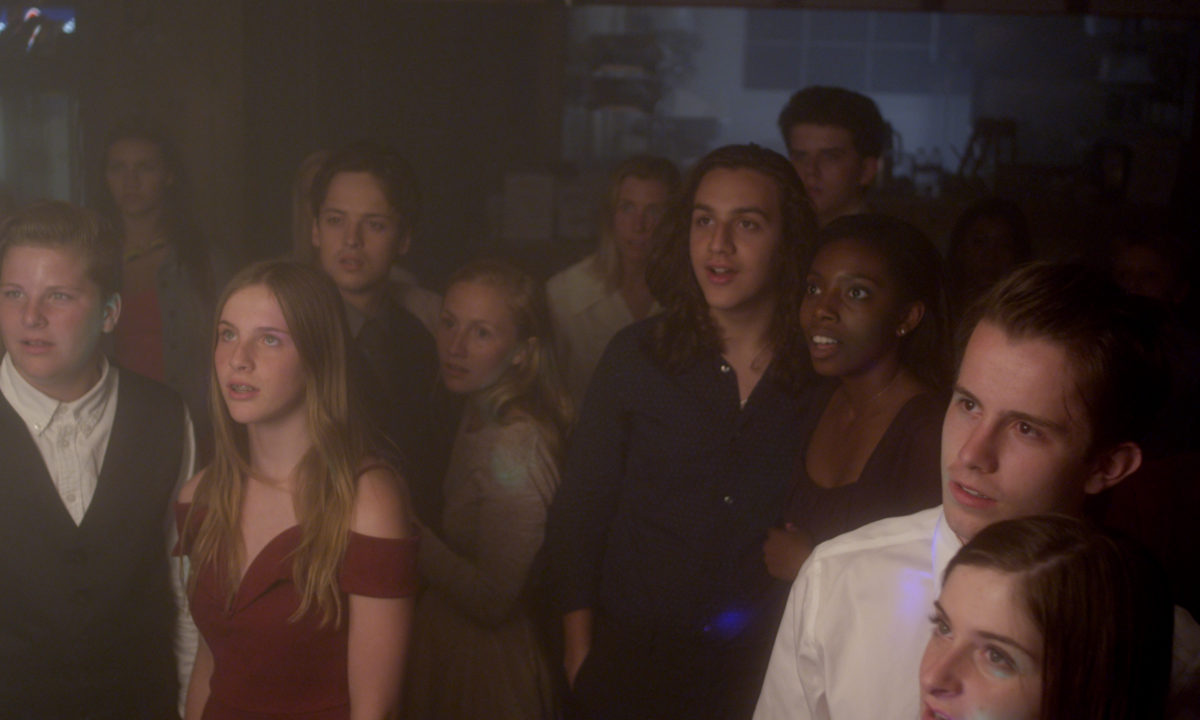
Split Tooth Media: Obviously, the first half of the film is very much concerned with ritual and the sense of competition that so often characterizes daily life. I thought that sense of competition seemed to be there from the very first sequence. We watch a group of men, assembled in a circle, as they each try to make a lighter spark. To me, it seemed like they weren’t just trying to get the lighter to work. They wanted to be the one to make it work, to win. The Monty’s sequence is a once-in-a-lifetime ritual, a competitive rite of passage. Did you mean for the film to explore these other, more mundane competitions that happen every day?
Tyler Taormina: I wouldn’t say that it was something I thought about at the drawing board stage. In hindsight, though, that sense of competition is definitely there. Capitalism and domination culture embed almost everything with the need to win. We’re constantly forced to compete and that’s so antithetical to communion. That’s what the Monty’s ritual is supposed to be, right? A process of coming together. When we think about rituals and ceremonies, we think of them as opportunities to join one another and competition can really undercut that.
I had to laugh when it turns out that they’re just lighting a firework. You could almost think they were lighting a fire to save their lives. There was something almost primal about it.
I thought of them as being on autopilot. They’re not necessarily frustrated with each other or even trying to assert themselves, but ‘dad energy’ has taken over.
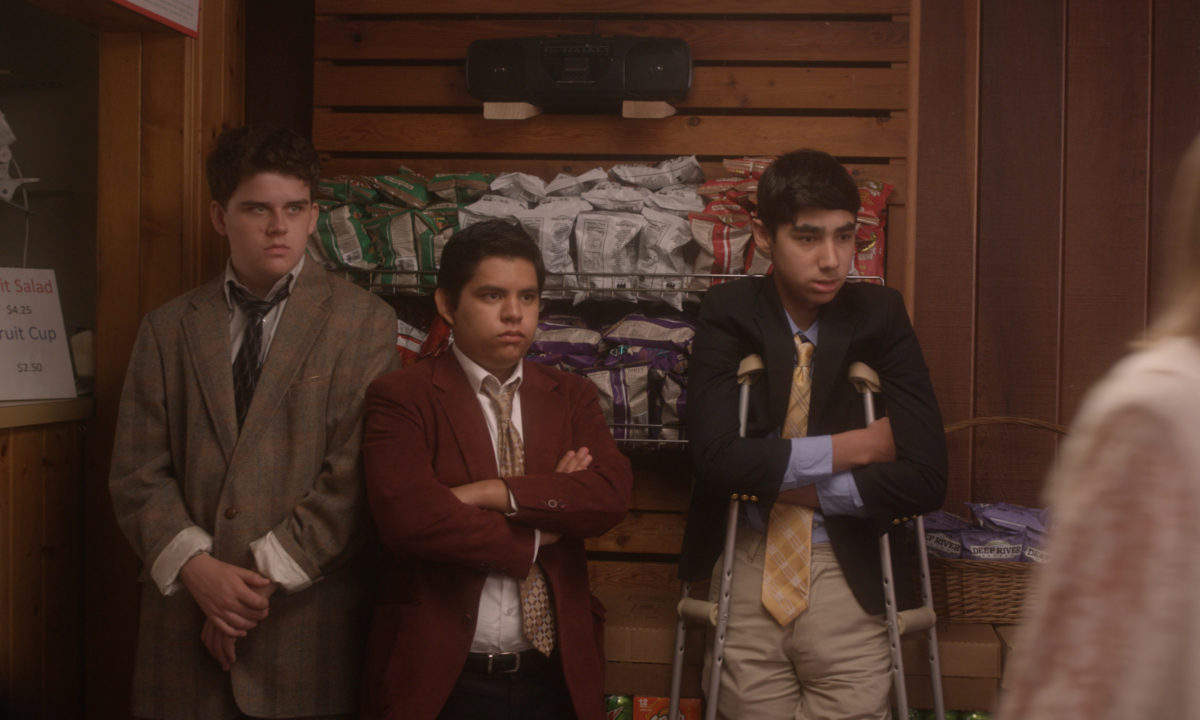
Was there ever a sense of competition among your young cast members? Did they get at all wrapped up in the ritual once they made it to Monty’s?
Definitely not. I would characterize that whole sequence as a really beautiful, communal process. Most of the pairing off was just an illusion that my editor Kevin Anton and I created in the editing stage. They were giving thumbs up or down and looking in either direction, but they weren’t usually looking at anyone in particular. I was able to keep the competition out of it. It didn’t seem necessary to introduce any on set when the Monty’s ritual, the whole system in place there, already has so much competition embedded in it.
Besides Haley (Haley Bodell), who’s obviously intended to miss out on the ritual and end up sticking around, how did you choose who would get paired off at Monty’s and leave town? Was that based on improvisation, a random process, or did you mean for everyone’s choice of partner and ultimate fate to be meaningful?
Pairing people off was another pretty random process. The thing we were very conscientious about was who would live to see the night, who wouldn’t get to cross the threshold and leave town. I wanted to make it clear that not everyone makes it out and that it’s not just one or two people who stay. It’s a group and they collect and become the town’s new population. It was important that they each arrive at that fate differently. For example, Jim (Blake Borders) doesn’t make it because he’s suddenly stricken with panic. Another character oversleeps and misses out on Monty’s altogether. Then there’s Haley who doesn’t make it out of town because she can’t bear to reject somebody. The whole ritual at Monty’s doesn’t agree with her at all. So, there’s all sorts of reasons a person might avoid these societal games.
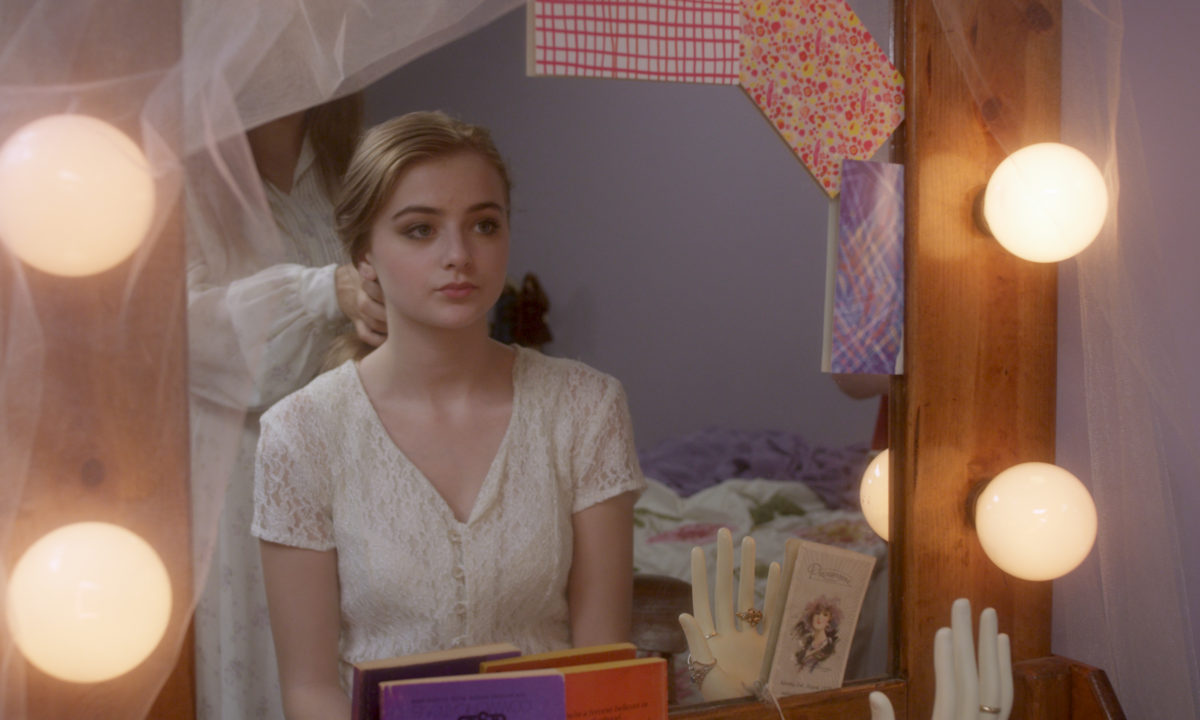
One thing I really like about the film is that — without putting too fine a point on it — you reject all of the obvious character types. It’s got a really large, really diverse cast and nobody fits into one of those five or so groups that movies and TV teach us we’ll meet in high school. So, rather than ask if you were a nerd or a stoner, I wanted to ask about your relationship to high school and teenagehood in general. Were you someone who took all the rites and rituals of growing up and going to school very seriously?
I have really fond memories of high school. It was a nice experience for me, not one of alienation or humiliation. And maybe this is just my romantic perspective, but I don’t think my classmates in general have much of that cliqueness or sense of social hierarchy. At the same time, I’ve always felt a little on the outside looking in when it comes to large groups. That’s a personality trait that’s followed me throughout my life and definitely shows up in the film. I had a good time at prom, but I didn’t take it too seriously. I didn’t take any of it too seriously. It’s only as I’ve gained consciousness in my adult life that I’ve started to feel the need to reconcile the difference between the blissfully ignorant part of my life and the next part — whatever’s out there.
I grew up in a town and went to a high school that takes prom and such even more seriously than most. Annoyingly so, if I’m being honest. You mentioned that you had a pretty average level of investment, but what was your hometown’s relationship to its high schoolers and their rituals like? Did it have any inspiration on Ham on Rye’s every-suburb?
I think my high school was also pretty average where that stuff was concerned. Proms and pep rallies weren’t a huge deal, but they weren’t a non-entity either. Some people I’ve spoken to have described growing up in obsessive communities, but mine was pretty normal. To answer your other question, though, my hometown heavily informed what this film became. Suffolk County was a placid, conservative, white area. Kids my age were raised with the notion that everything was OK. We were post-history, post-racism, post-everything. This was the best possible iteration of the world. It was interesting for the movie to come out at a time where that dream of suburban life is crashing. It’s coming down in a big way. And that’s what the film is reconciling, from my point-of-view: the ‘perfection’ and ‘simplicity’ of the suburbs and childhood being confronted by a devastating reality. Where did you grow up?
Outside of Philadelphia, a town called Yardley. Pretty similar, nothing bad ever happened until it started to. A lot of it’s stuff that’s probably always been there, but the opioid crisis has hit the whole area pretty hard over the last few years.
That was something you’d hear a little bit about when I was high school that looks inescapable now. I mentioned feeling like my consciousness had evolved and inspired me to make the film, but I think that evolution has also happened globally. We’ve awakened in a big way. That’s not to say we’re totally awake, but we’re more awake.
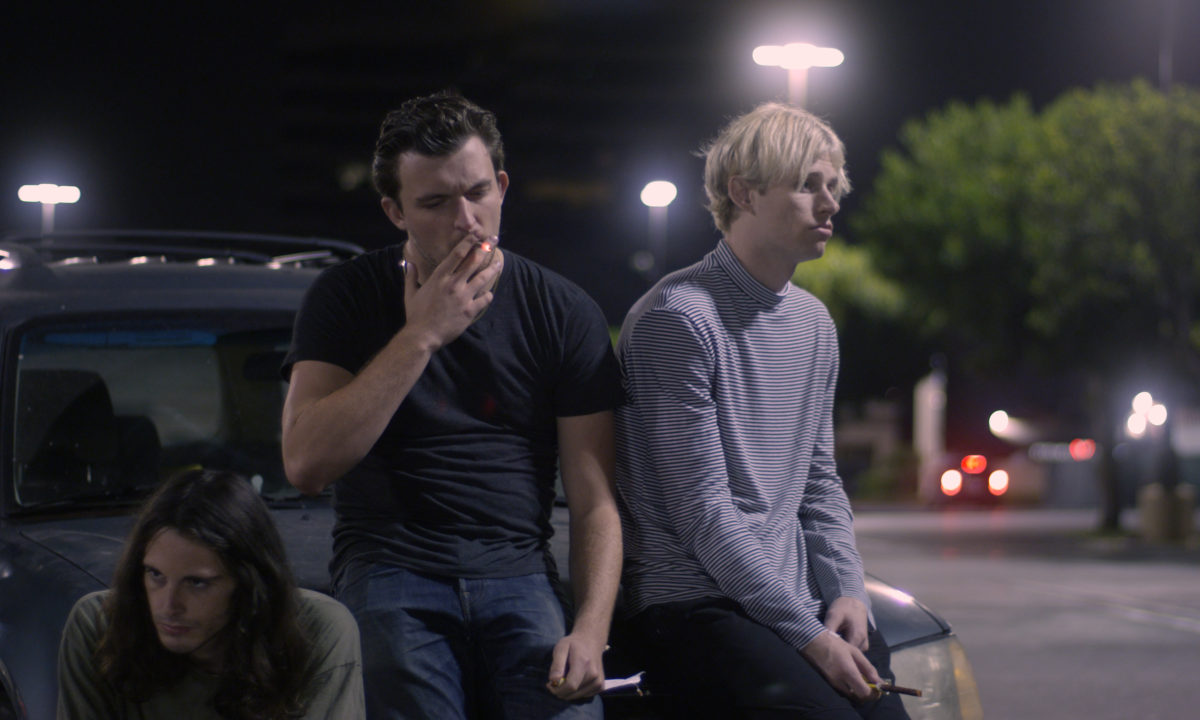
What’s your relationship like with your hometown now?
I came back in August to work on a movie which I’m shooting until December. We’re halfway through the shoot right now, it’s a medium-length, abstract film with a two-person crew. As for my relationship with the town right now, it grows further into contempt. I love things about this place. I have so many beautiful memories here and there’s a lot of beauty here, but there’s a lot of Blue Lives Matter flags too. A lot of things that break my heart, you know. I feel really conflicted being here because it’s where my roots are and for a time I was fooled into thinking it wasn’t so insidious.
The film’s two halves are so distinct. They’ve got their own palettes, soundscapes, even their own casts to an extent. Did your approach behind the scenes or on set change between the pre-Monty’s and post-Monty’s sequences?
When we were filming during the day, I was often blasting music on set between takes. I was trying to build a mood and get people amped on the experience. I don’t remember much music from the night-time shoots. I think we were both living in the silences and trying not to mention how tired we were at the end of those long days.
There’s an extra layer of poignancy to a film about youthful rites of passage coming out at a time when so many are being cancelled or put on hold. Families are separated, schools, and many restaurants like Monty’s are closing for good. Could you talk about how the pandemic has affected Ham on Rye’s release.
It’s true that the current situation speaks to a lot of the movie’s themes, in terms of the starvation of the ‘third home.’ You’ve got your first home that you live in, the second home where you work, and the third home, an extra space where the community gets together. Both those second and third homes are coming apart at the seams. At the same time, I think Ham on Rye and my short film Wild Flies set out to explore the unsavoriness of that third home and its place in our lives. To describe the release from a material perspective, it’s very hard to say. My hunch is that the pandemic helped us get the film out there more than we would’ve otherwise. We had a physical theatrical run planned for spring and now we’ve had this virtual theatrical run instead. A lot of theaters agreed to it. I’ve never done this before, but 20 or 30 theaters and positive write-ups from most of the major outlets feels like we got lucky.
Do you believe that the kids who leave town have won?
I think a lot of people do read the film that way. That’s not a fault on their part, some of that is in the film and I can understand why they’d come to that conclusion. They believe that if you’re left behind that you’re a failure. The film touches upon that fear and stigma. It addresses how believing it can make it a reality. What nobody tends to talk about is that disappearing doesn’t really seem like a victory. The way I wanted to construct it was that these kids were almost lining up for the slaughter. They laugh into a sunset that very aggressively scoops them away, it de-materializes them. That’s not a good fate in my mind. And what convinces a person to want to win these games? You have to be somewhat uncritical and even oblivious to happily consent to take part in our domination culture. The film presents the ritual at Monty’s as a lose-lose from an emotional standpoint. You either play the game and essentially trade your life for it or you don’t play the game and you suffer a great deal.
Ham on Rye is available to stream through select theaters here
Stay up to date with all things Split Tooth Media and follow Bennett on Twitter
(Split Tooth may earn a commission from purchases made through affiliate links on our site.)

